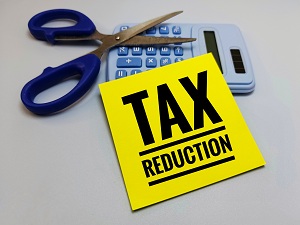
Business Advisory Services
Everything you need to help you launch your new business entity from business entity selection to multiple-entity business structures.
Table Of Contents

Posted Sunday, October 5, 2025
We often get asked about rental properties, specifically short-term rental properties, and how they are a part of an overall tax strategy especially among high income earners. As we’ve mentioned elsewhere, rental properties are a wealth building strategy not solely a tax reduction strategy. However, they can be both! More like a train of wealth building cars with a tax strategy caboose. Let’s not forget lifestyle which is truly the caboose in our wealth building and tax strategy train.
A lot of this material is scattered in our book, so we will make references to certain sections for expanded reading. What we are doing here is providing a checklist of sorts to run through as you incorporate rental properties into your tax strategy.
The phrase “tax strategy” is code for paying less in taxes. Simply buying a rental property does not reduce your taxes if you are passive loss limited. Specifically, if your modified adjusted gross income (MAGI) exceeds $150,000 then your passive losses from rental activities or any other investment activity is limited, and carried forward into the future on Form 8582. Recall that rental property activities are inherently deemed passive unless you meet some criteria (that we discuss in a bit). Also, MAGI for this purpose is generally adjusted gross income (AGI) before passive loss limitations (and in contrast is not the same MAGI when considering IRA income limits).
Sidebar: According to a 2022 census, about 12 million households had MAGI above $150,000, the phaseout threshold, representing about 8-9% of all U.S. households.
You need three things, and not necessarily combined, for rental properties to avoid being negatively impacted by passive activity loss limitations and therefore become lovely tax vehicles-
Your tax strategy must start with getting around passive activity loss limitations otherwise your rental property is just a wealth-building or lifestyle strategy.
If you can bypass the passive activity loss (PAL) limitations through real estate professional status or short-term rental loophole, then a cost segregation study might be in order. Cost segregation is a process that identifies personal property and parses it away from real property (the building), and in turn allows for accelerated depreciation or IRC Section 179 expensing. On a $600,000 purchase where $400,000 is allocated to the building, you could see a $70,000 to $90,000 tax deduction just from a cost segregation study (about 18 to 25% of the building’s cost depending on the size and design). At a 32% marginal tax rate, a cost segregation study becomes part of your tax strategy with a savings of $25,000 in cash using our example.
Keep in mind that cost segregation is purely a cash flow play. There isn’t any magical depreciation or a secret tax deduction that is created- what is available to you over time is suddenly compressed and available to you today with a cost segregation study. Also, keep in mind that depreciation is a unique tax deduction since it is a cashless expense- sure, you are using your own cash in a roundabout way either through a loan that must be repaid or your own cash in a loan-free purchase. However, it just feels different, right?
With the One Big Beautiful Bill Act signed into law on July 4, 2025, bonus depreciation is back to 100% for a bunch of years. Yay! Bonus depreciation is available on any asset that has a useful life of 20 years or less. This allows for personal property identified in a cost seg, appliances, land improvements, hot tubs and even a kitchen renovation (we’ll talk about qualified improvement property in a bit) to be immediately and fully depreciated and therefore tax deductible in the first year.
What is also sexy about bonus depreciation is that it does not have a claw back provision like IRC Section 179. Huh? If an asset, such as a rental property, falls to 50% or less business use, any Section 179 benefit is recaptured as ordinary income and becomes taxable to you. Yuck. However, bonus depreciation does not have this poison pill. The one knock on bonus depreciation is that many states do not recognize it- as such, you get a big federal tax deduction, but your state says No and forces you to use typical depreciation.
Should you sell your rental property outright (versus using a 1031 like-kind exchange), all depreciation and Section 179 benefits are recaptured regardless. Read our accelerated depreciation and Section 179 deduction section.
Qualified Improvement Property (QIP) is defined as any improvement made to the interior of a nonresidential building after the building is placed in service and is eligible for bonus depreciation. Improvements exclude expansion of the building and changes made to a building’s internal structural framework. Oh, and let’s not forget that residential property also does not qualify- what does that mean? Any rental where the average guest stay is 30 days or less is considered nonresidential (in slight contrast to the tighter requirement of 7 days or less for the short-term rental loophole).
How is this a tax strategy? In a typical long-term rental property, any improvement such as a kitchen renovation is capitalized and depreciated over time. However, with a short-term rental property or technically a nonresidential property, a $80,000 kitchen reno becomes an immediate tax deduction with bonus depreciation under IRC Section 168(k). If you later convert the rental property into a second home in the future, this improvement checks both lifestyle and tax reduction boxes.
This can be a rabbit hole so we’ll keep this brief. Deducting a home office in connection with your rental properties has challenging requirements. Under IRC Section 280A, your space must be dedicated, and regularly and exclusively used for your rental property activities. What is regular and continuous? It is not defined anywhere, however, a single long-term rental property is unlikely to support regular and continuous. A single short-term rental property? Perhaps. A rental in Florida is a bit different than a ski condo since one is rented 40 weeks of the year and the other might get 15 weeks if you are lucky.
The big play on home office deduction as part of your rental property tax strategy is travel expenses. Most travel to a rental property in the same geographic location as your primary residence (tax home) will be considered commuting and therefore not tax deductible. Add a home office, and suddenly your commute is from the bedroom to the basement, and travel from your home to the rental property across town is deductible travel. We expand on this in our home office deduction section.
If you have a home office for your non-rental business, then combining it with your rental property activities might be counterproductive. In a non- S corporation environment, a home office deducted on Schedule C against your business or independent contractor income or against your partnership K-1 income, reduces both income taxes and self-employment taxes. This is preferred over reducing your rental property income or using rental losses to offset W-2 income since that tax strategy only reduces income taxes and not both income taxes and self-employment taxes.
This is similar to the home office tax strategy, but with another layer of risk. Any business tax deduction including a rental property tax deduction requires that the expenditure is ordinary and necessary under IRC Section 162. Deducting mileage on your personal automobile for travel to the rental is a snap. Rather, let’s talk about a Lamborghini Urus purchased by the rental property. Roll with this for a minute. Ordinary means that everyone in the rental property business owns an automobile dedicated or mostly dedicated to their rental activities. Technically, ordinary means everyone in your line of work, business or industry has the same expenditures which might include automobiles.
Necessary means that your rental business would suffer financially if you did not have a Lambo to rock up to your short-term rental with a fresh basket of towels. The U.S. Supreme Court in Welch v. Helvering, 290 U.S. 111 (1933) states that necessary means appropriate and helpful. A Lamborghini Urus is a sexy automobile. Incredibly sexy. However, most reasonable people would consider a Lamborghini beyond appropriate and helpful, and would likely recommend a nicely used Porsche Macan for your towel delivery service.
In other words, to be deductible under IRC Section 162, an expense must be ordinary (common and accepted in the rental property industry) and necessary (appropriate and helpful to your rental activity), and when combined, the amount must be reasonable under the circumstances.
How can you make this work? Two options might exist. First, you have several rental properties, and it just makes sense to have a dedicated van or work truck to bounce between them all including Home Depot or Lowe’s. That’s easy and not very attractive to most people wanting to reduce their taxes since this option is more operational and born out of necessity.
The second option involves a bunch of risk. You could own a $100,000 SUV personally and lease it back to your rental property or series of rental properties. For example, you use the automobile 60% of the time for your short-term rental property. You would lease it to your rental property at fair market value (for example, $300 a week or about $15,000 a year). Your rental property would have a $15,000 lease deduction. You would pick up $15,000 in nonpassive income on Schedule 1.
Sidebar: You would not report this on Schedule E since it is personal property and not leased alongside real estate. You would also not report this on Schedule C since you are not in the car rental trade or business.
You would also report depreciation at 60% and other expenses at 60% on Schedule 1 to offset this income. In other words, your tax strategy is to increase losses in your rental property, and have it be a net-zero on the other side.
Sidebar: We slipped in the word “nonpassive” when referencing the lease income. This is an important detail since you cannot use nonpassive income (profits) to offset passive losses (such as those from long-term rentals).
Keep in mind that the IRS absolutely despises self-rentals or related party transactions with the heat of a thousand suns. You would need to document the business purpose and need, and ensure the transaction is at fair market value to support the arm’s length hurdle. Also, keep in mind that IRC Section 179 prohibits expensing in this situation, and IRC Section 168(k), where accelerated depreciation lives, also has anti-abuse provisions as reinforced by Treasury Regulations Section 1.168(k)-2.
In practice, you can split the baby between boring basic mileage deduction and sleek Lamborghinis with a well-documented SUV lease between you, personally, and your rental property activity.
Recall that under IRC Section 280A you can personally use a rental property for 14 days or 10% of its fair rented days, whichever is higher, without falling into the friend zone. Ok, not the friend zone like Chris Rock talks about, but rather vacation home rules where your losses are suddenly limited to rental revenue.
However, if you perform routine repairs and maintenance to the rental property for substantially most of the day, then that day doesn’t count against your personal use allotment. For example, you visit your short-term rental property for 4 days. 3 days were spent painting, fixing that railing, swapping out door locks with ones that actually work, staining the deck (again), and shopping for new throw pillows since the current ones are nasty. In this example, only 1 day is considered a personal use day.
No, you can’t wake up at 9:00AM, hose the patio off at 9:15AM while sipping a coffee, check the ball bearings on the garage door opener for wear at 9:50AM, and then call it a day at 9:53AM after realizing that openers don’t have ball bearings. See our vacation home rules section for more information.
You could easily take all this to a new level. Is the following a WCG CPAs & Advisors recommendation? Um, No. It is a smash up of observations blended with a dash of tax code. Here we go on a very extreme and compressed timeline-
The first year, you place the short-term rental property into service on day 1.
Of course, this is rather nutty and is an extreme example of short-term rental loophole as a tax strategy and a lifestyle improvement. The risk is high that the IRS would challenge the legitimate business purpose at every turn. In other words, is this a thinly veiled way of creating a large tax deduction through a short-term rental converted to second home tax strategy?
Who wants a less extreme version of similar facts?
We say everywhere, and we’ll say it again- rental properties are a part of your long-term wealth-building strategy first and foremost. Secondarily, rental properties can be a short-term tax strategy with emphasis on the word “can.” The most impactful tax strategy is either real estate professional status or short-term rental loophole combined with a cost segregation study and bonus depreciation. The home office and automobile tax strategies are a distant second.
Finally, we discussed the rental property maintenance tax strategy which is more of a lifestyle strategy. However, if your lifestyle can be supported alongside a reduction in taxes, then that is a double win.
